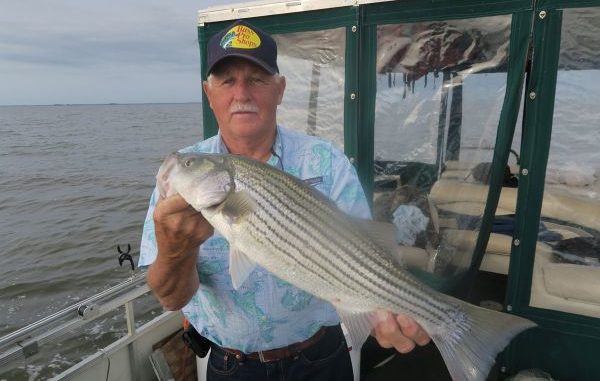
Use this technique to catch fish no matter what depth they are holding in
Spoons are one of the oldest fishing lures in the book, and it’s still around because it’s so effective.
But, while many anglers use them for jigging around brush piles with a process known as “perch jerking,” Capt. David Hilton uses a different technique that allows anglers to cover more water than is traditionally possible.
“We just call it spooning,” said Hilton, who uses the technique while striper fishing.
The process is pretty simple. Anglers can either anchor over a brush pile or drift areas with varying depths and structure changes.
It’s that structure that attracts fish, so dropping a spoon nearby will often entice those fish.
When perch jerking anglers drop spoons down, and then raise and lower the rod tip, making the lure move up and down like a yo-yo.
This covers a small section of the water column, and although it is very effective this time of year, the amount of water covered is limited.
“If the water is 45 feet deep and you’re perch jerking, you’re really only covering about 10 to 15 feet of water,” said Hilton.
Spooning, on the other hand, involves dropping spoons to the bottom. Then the anglers reel as fast as they can, pulling the lures all the way up to near the surface.
The spoons are then dropped all the way back down again.
It’s good to mix in a few pauses here and there, and to drop the spoon back down once it’s halfway up every few times. But, ultimately, the spoon travels through the entire water column, meaning that, no matter what depth fish are holding, they’ll have a chance to see the lure.
It’s pretty fast action, so Hilton uses a baitcasting reel. This lets anglers simply push the button to release the lure, and it’s easy to reel quickly.
“These stripers don’t care how fast it’s going, so don’t worry that you’re reeling too fast: You aren’t,” he said. “It’s not possible to reel too fast for these fish. If they want that spoon, they will chase it down.”
Aside from covering the entire water column, Hilton likes that fishing this way presents the lure at two different speeds.
“When it’s falling, it’s going pretty slow and fluttering down. When you’re reeling, it’s moving fast,” he explained. “Some fish want that slow fall, and some want the fast action.
“You’re offering them both, and you’re also constantly putting the lure in the strike zone, even if you don’t know what depth the fish are in.”


